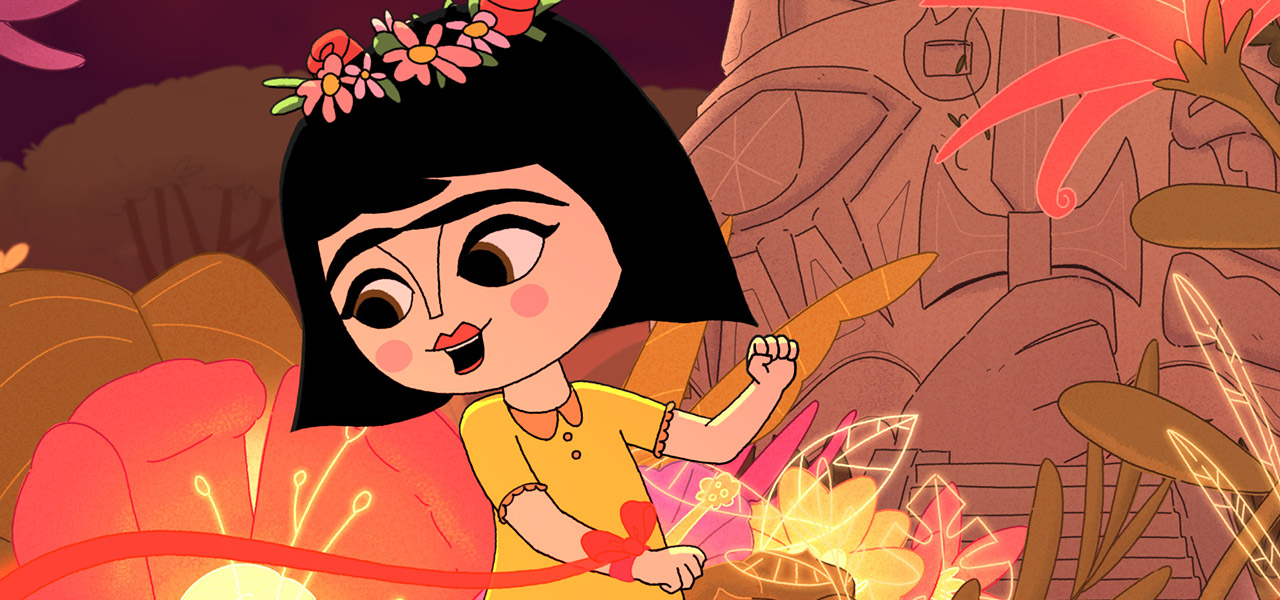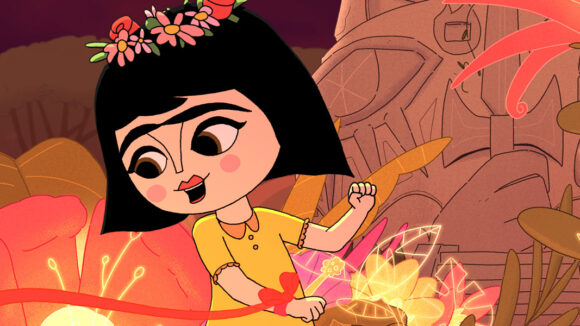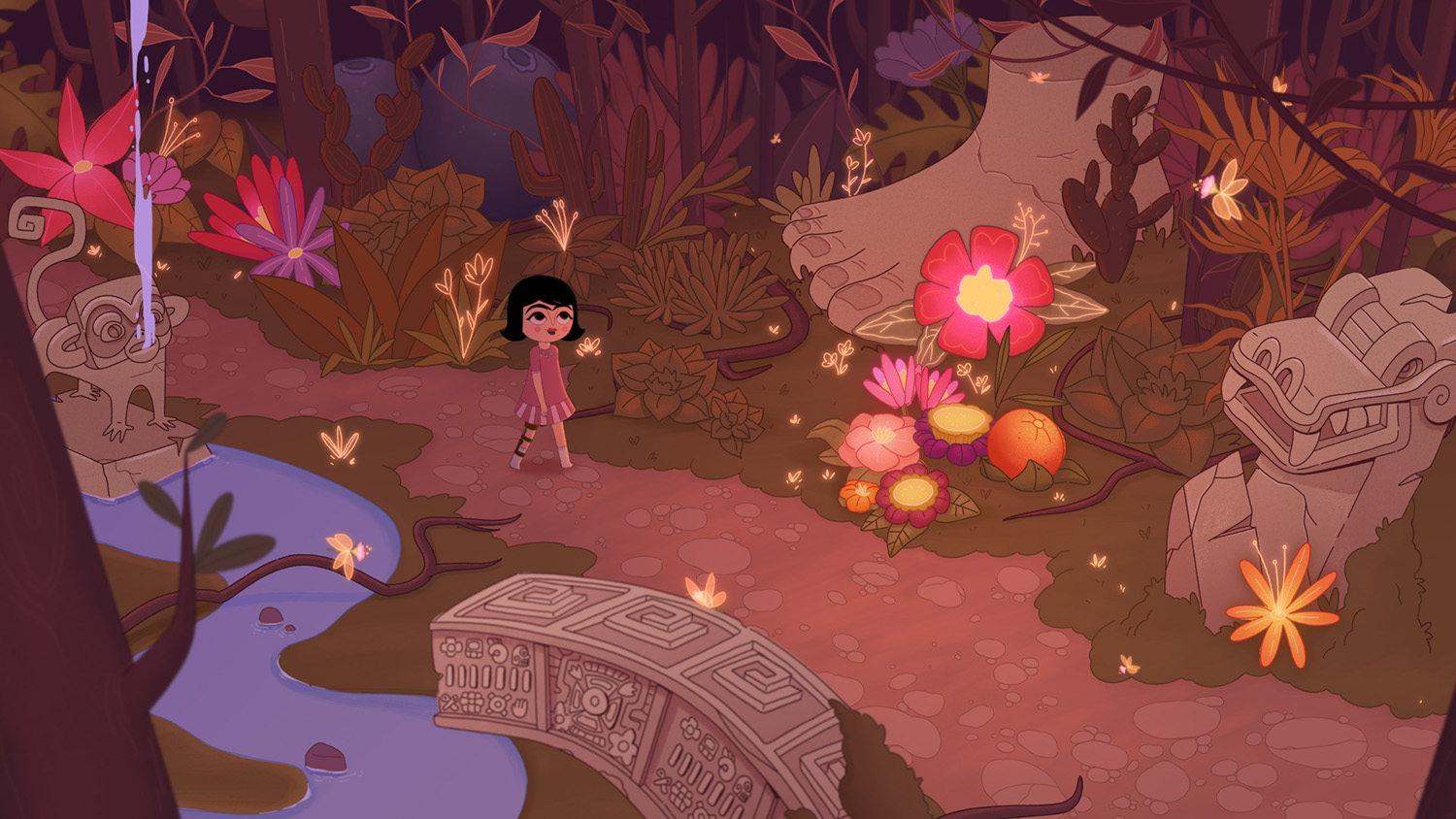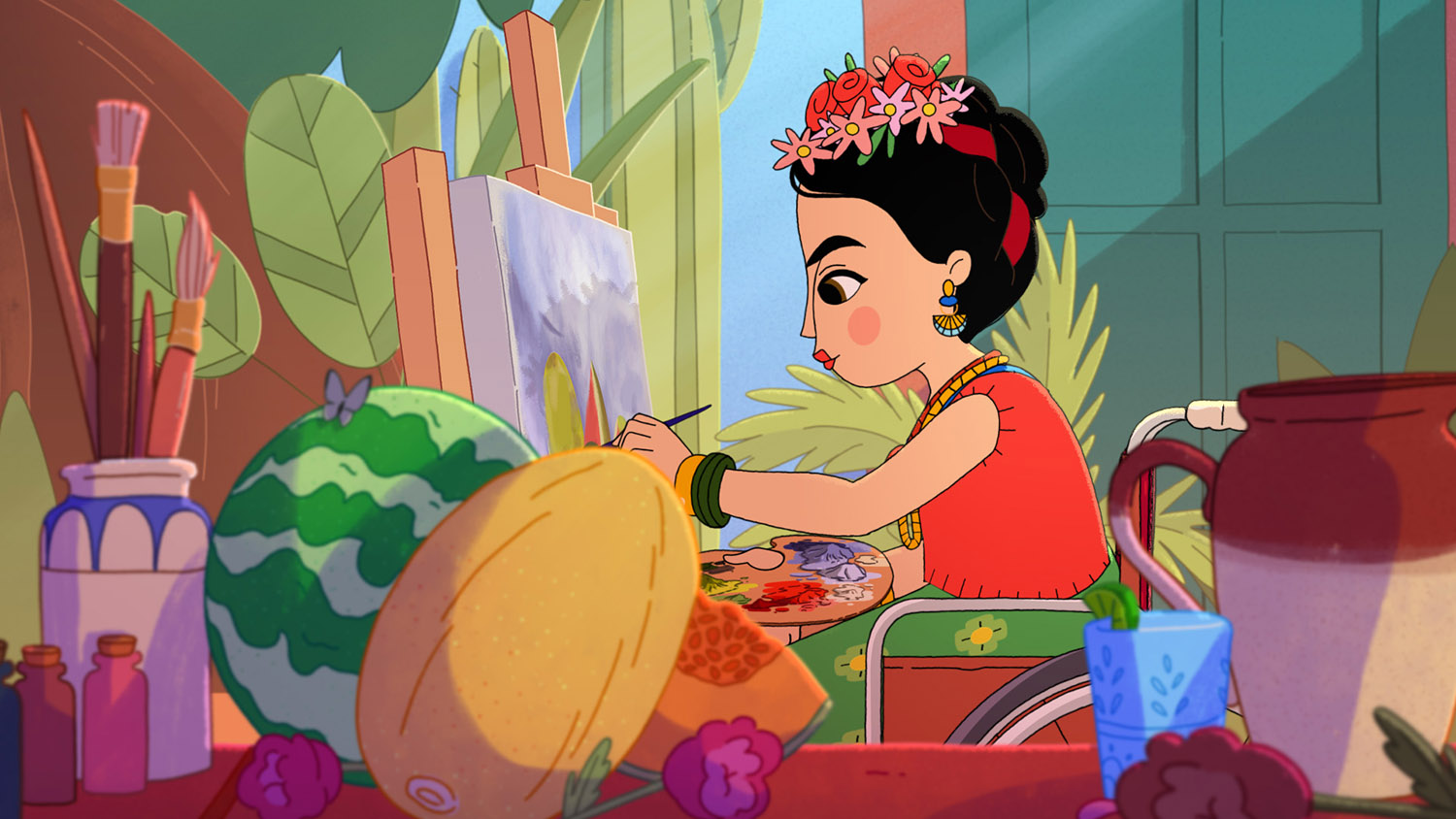

‘Hola Frida’ Introduces A New Generation To An Iconic Mexican Artist (Exclusive Trailer)
Making its U.S. debut last month at the New York International Children’s Film Festival is the new feature, Hola Frida. A loose adaptation of the children’s book Frida, c’est moi by author Sophie Faucher and illustrator Cara Carmina, the film’s directors André Kadi and Karine Vézina imagine the vibrant childhood of young Frida Kahlo in the Coyoacán neighborhood of Mexico City.
Traditionally animated by Quebec City’s Du Coup Animation (co-founded by Kadi), Hola Frida’s target audience is children and families, using Kahlo’s fascination with the gods and symbolism of her Coyoacán ancestors as a way to inspire kids to pursue their passion for creativity and the arts.
Independently produced by Haut et Court Distribution (France), Tobo Media (Canada), and Du Coup Studio Production with international distribution by Paris-based Dandelooo Cinéma, the film Has already been a featured animation title at several film festivals since the end of 2024, ahead of its French, Canadian and Spanish cinema releases this spring.
Speaking with Cartoon Brew before their film festival appearance in New York City, directors Kadi and Vézina explained how they used Frida, c’est moi as a starting point to develop the overall look of the film while also broadening the story to sustain a feature-length film.

They were certain that they wanted to tell a more complex story than what was just in the book, and they looked to Kahlo’s life and culture to develop their approach to the visual language of their film. Said Kadi:
Cara’s illustrations are gorgeous, but the book is aimed at a fairly young audience, while the movie can be quite tough at times and is aimed more at children aged seven and up. Our artistic production and animation director, Marie-Michelle Laflamme, therefore undertook extensive stylistic research with our team at Du Coup Animation, in particular Jade Tam for the environments and Justine Prévost for the characters, in order to find a more mature artistic direction that retains the strengths of the original illustrations, but in a style adapted to animation.
The directors spent time in Coyoacán during the Day of the Dead festivities to best immerse themselves into the colors, the light, and specific flavors of Kahlo’s native culture. Vezina said they met with Perla Labarthe, the director of the Frida Kahlo Museum, and Cristina Kahlo, Frida’s grandniece, to see the artist’s living spaces with their own eyes.

Their research helped them establish an important color palette evolution in the film — subtle in the childhood sections versus bold when portraying her iconic adult style — which is meant to express Kahlo’s creative journey.
Hola Frida opens with adult Frida in her family home. There she finds some of her old childhood sketchbooks which inspire memories of that important time of discovery in her formative years. Kadi explained:
It was one of the most important aspects for us that the color palette follows the narrative curves of the film. From the moment Frida learns that she comes from the “people of the clouds,” the Zapotecs, we wanted the light and the clouds to accompany her mood, the moments of her life.
Vézina added:
Everything reflects her state of health or her mood, allowing us to experience these moments with her. The colors, the light, the saturation, but also the music, the sounds, the atmospheres. And the more she dives into her imaginary world, the more the palettes and motifs resemble her paintings.

The directors said they made a conscious decision not to include an array of like-for-like reproductions of Kahlo’s iconic paintings, and instead only chose her 1954 still-life, “Viva la Vida,” to open the film. However, they represent most of her work symbolically throughout the film, including seminal works “The Broken Column,” “The Two Fridas,” and many self-portraits, throughout backgrounds, textures, and character designs.
The directors hope that Hola Frida will introduce the current generation to Kahlo’s uniquely Mexican celebration of her culture and ancestry. The pair pointed out two of their favorite sequences that they think encapsulate their intentions in the final film. Said Vézina:
The Muerte sequences impressed but also fascinated the younger children, and the bullying at school sequence also made an impression. But when we talk about the artistic side of Frida, the fantasy world sequences are the closest to her graphic universe. The evocation of her notebook is also important to explore her world a bit. It was very central to her life, and it shows a different facet of her art than her paintings. We wanted to integrate it as a structuring element in the movie — whether during time ellipses, as an “exaltation” when she is sad or angry, it accompanies Frida’s life.

Added Kadi:
The cemetery sequence during El Día de Muertos is also striking because it ties together several beautiful narrative threads. Forgiveness, acceptance, resilience: all the strong themes of the movie are there.
Key Credits
Directors: Andre Kadi and Karine Vézina
Screenwriters: Anne Bryan, Sophie Faucher, Émilie Gabrielle, André Kadi
Producers: Florence Roche, André Kadi, Laurence Petit, Eliott Khayat
Animation supervisor: Audrey B. Portelance
Composer: Laetitia Pansanel-Garric
Animation studio: Du Coup Animation
Production: Umbrella, Cinemon Entertainment
